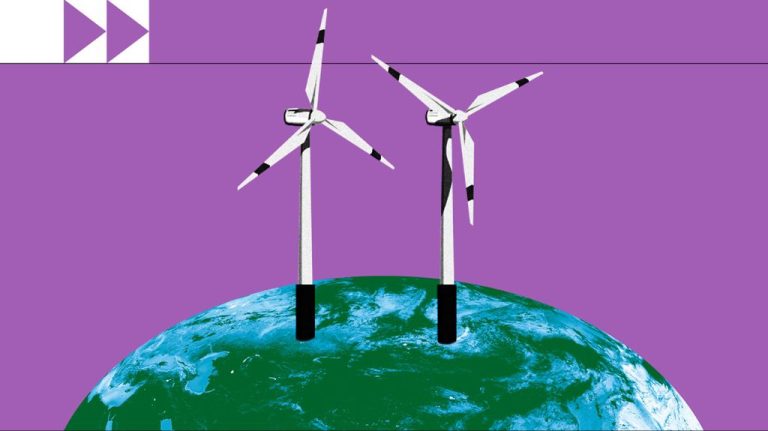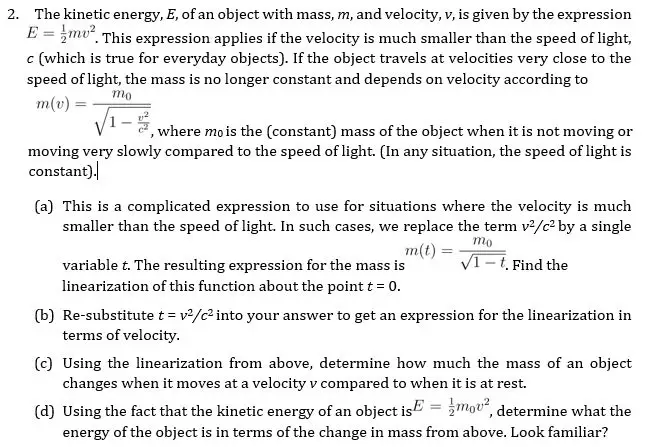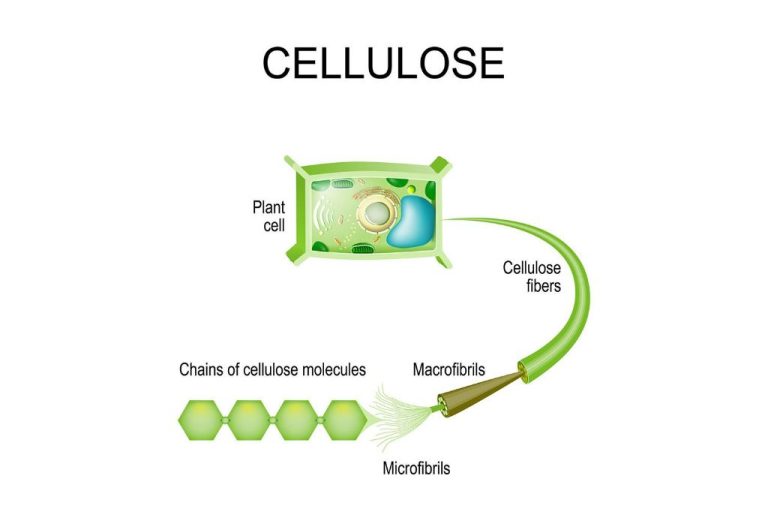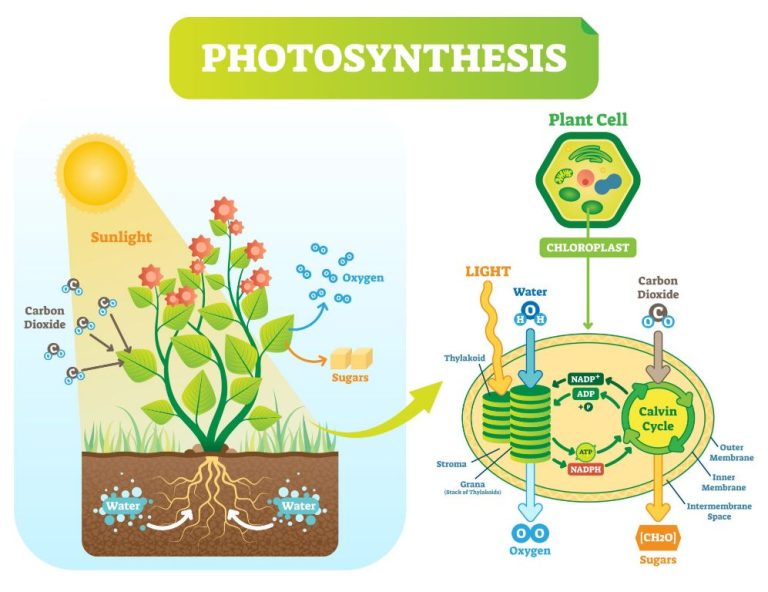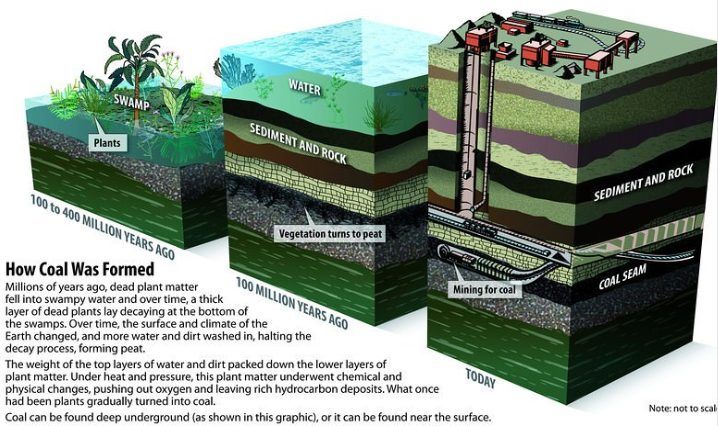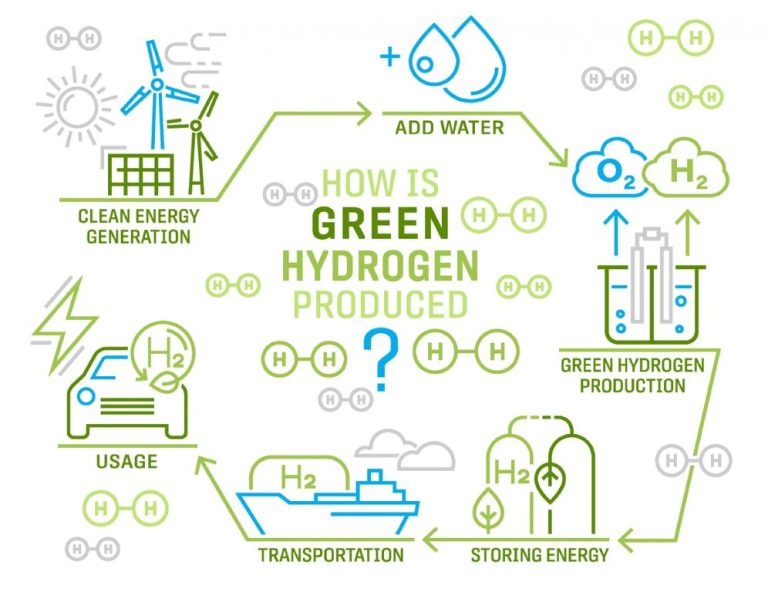How Does Photosynthesis Contribute To The Carbon Cycle Quizlet?
Photosynthesis is the process plants and some bacteria use to convert sunlight, carbon dioxide, and water into sugar molecules like glucose. It is an essential process that provides the food and oxygen all animals, including humans, need to survive. Photosynthesis is vital not just for individual plant growth but for the health of the entire ecosystem.
In the simplest terms, the purpose of photosynthesis is to convert the sun’s light energy into forms of chemical energy that can be used by plants and other organisms. During photosynthesis, plants take in carbon dioxide (CO2) from the atmosphere through their leaves and use the sun’s energy to transform it into oxygen (O2) and carbohydrates like glucose (C6H12O6). Photosynthesis provides a major pathway through which energy enters ecosystems on Earth. Without it, complex life could not exist.
Photosynthesis is critical for maintaining oxygen levels in our atmosphere and providing the chemical energy needed to sustain virtually all life on Earth. It is one of the most important biochemical processes, making it essential to understand its mechanisms, inputs, stages, and products.
The Light Reactions
The light reactions of photosynthesis take place in the thylakoid membranes of chloroplasts. This is where chlorophyll and other pigments absorb light energy. The absorbed light excites electrons in the chlorophyll molecules, providing energy to drive the light reactions.
In the light reactions, the energy from light is used to generate ATP and NADPH. This happens through a series of reactions involving Photosystem I and Photosystem II. When light hits chlorophyll, an electron gains energy and is ‘excited’. The excited electron is transferred between carriers in the electron transport chain. As the electron is transported, it provides energy to pump H+ ions across the thylakoid membrane into the lumen. This creates a concentration gradient that drives the synthesis of ATP. The electron eventually reduces NADP+ to NADPH.
Therefore, the light reactions harness light energy to produce the ATP and NADPH that will be used in the Calvin cycle reactions. The creation of these energy carriers by harnessing light is one of the essential steps of photosynthesis.
The Calvin Cycle
The Calvin cycle, also known as the light-independent reactions, is the second stage of photosynthesis. This cycle focuses on the fixation of carbon dioxide from the atmosphere into organic molecules like glucose.
The Calvin cycle utilizes the energy carriers (ATP and NADPH) generated from the light reactions to fix CO2 into three-carbon sugars like glyceraldehyde 3-phosphate (G3P). The enzyme RuBisCO catalyzes the fixation by combining CO2 with a 5-carbon acceptor molecule called ribulose-1,5-bisphosphate (RuBP). This forms an unstable 6-carbon compound that immediately splits into two molecules of 3-carbon G3P.
Most of the G3P produced is used to regenerate RuBP so the Calvin cycle can continue. However, some G3P leaves the cycle to be converted into glucose and other carbohydrates. This represents the net carbon fixation and sugar production from the Calvin cycle.
In summary, the Calvin cycle utilizes the energy and electrons from the light reactions to fix inorganic CO2 into organic 3-carbon sugars like G3P. Some of this G3P exits the cycle to form glucose, resulting in a net production of sugars. This conversion of CO2 into biomolecules is why the Calvin cycle is also referred to as the carbon fixation stage of photosynthesis.
Release of Oxygen
One of the most important byproducts of photosynthesis is the release of oxygen into the atmosphere. During the light reactions, as photons are absorbed by chlorophyll, electrons are energized and hydrogen ions are released. The oxygen atoms left over join together to form oxygen gas (O2), which is then released into the air.
This release of oxygen through photosynthesis is incredibly important, as it provides most of the oxygen available in Earth’s atmosphere. Oxygen makes up about 21% of the gases in our atmosphere. Without photosynthesis constantly replenishing the supply, this percentage would drop dramatically. Photosynthetic organisms, like plants, provide all the oxygen needed for aerobic respiration in both plants and animals. This oxygen allows more complex life forms to exist on Earth.
Carbon Fixation
During the Calvin cycle, carbon dioxide is taken in and “fixed,” meaning it is converted from an inorganic molecule to an organic molecule that can be used by living organisms. This process takes place in the stroma of chloroplasts. The enzyme RuBisCO catalyzes the fixation reaction, binding CO2 to a 5-carbon molecule called ribulose-1,5-bisphosphate (RuBP). This forms a 6-carbon intermediate, which splits into two 3-carbon molecules called 3-phosphoglycerate (3-PGA). The 3-PGA is then reduced using ATP and NADPH from the light reactions, forming a 3-carbon sugar called glyceraldehyde-3-phosphate (G3P). Some of the G3P is used to regenerate RuBP so the cycle can continue, while the rest is removed from the cycle to produce glucose and other carbohydrates that the plant needs. So in summary, carbon dioxide from the atmosphere is incorporated into organic carbohydrates during the Calvin cycle through the process of carbon fixation.
The Carbon Cycle
The carbon cycle is the process through which carbon moves through the Earth’s various systems. Carbon is a key ingredient for life on Earth and is present in all living organisms. The carbon cycle involves the movement of carbon between the atmosphere, oceans, land, plants and animals.
During photosynthesis, plants use carbon dioxide from the atmosphere, along with water and sunlight, to produce glucose and oxygen. This process removes carbon dioxide from the atmosphere and converts it into organic compounds like sugars, fats and proteins. Through photosynthesis, carbon is incorporated into plant tissue. Plants use some of this carbon for their own structure and metabolism. The rest is either consumed by animals or decomposed by microbes and fungi and released back to the atmosphere as carbon dioxide.
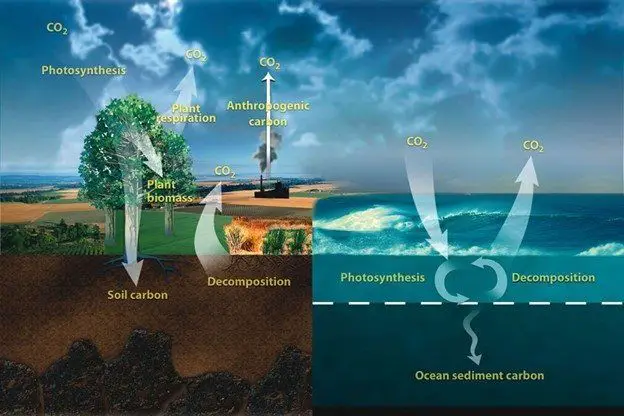
The carbon that ends up in the planet’s oceans, soil and sediments can stay there for millions of years. The long-term storage of carbon to balance its uptake by photosynthesis helps regulate the amount of CO2 in the atmosphere. However, human activities like burning fossil fuels and deforestation have disrupted the natural carbon cycle by rapidly adding carbon to the atmosphere.
Carbon Storage
Photosynthesis results in the formation of carbohydrates that can store carbon for variable amounts of time. The carbon fixed during photosynthesis is incorporated into cellulose, starch, and other carbohydrates that make up the structures of plants. The carbohydrates produced by plants serve as an energy source for both plants and animals.
When animals consume plants, or other animals that have eaten plants, the carbon compounds are broken down through cellular respiration to release energy. However, not all of the stored carbon is immediately released back into the atmosphere. Some of the carbon is incorporated into the consumer’s body and remains stored until the animal dies and decomposes. In this way, carbon can be passed up the food chain, going from plants to herbivores to carnivores, and remaining stored in different organisms for months to years before eventually being released back into the environment.
Effect on Atmospheric CO2
Photosynthesis plays a crucial role in regulating carbon dioxide (CO2) levels in the atmosphere. During photosynthesis, plants absorb CO2 from the air and use it to produce carbohydrates like glucose. This process removes CO2 from the atmosphere.
By absorbing CO2, photosynthesis helps counteract the effects of respiration and combustion, which release CO2 into the atmosphere. Plants act as a “carbon sink” by sequestering atmospheric carbon in their tissues. It’s estimated that land plants absorb about 120 billion metric tons of CO2 each year through photosynthesis.
The reduction of atmospheric CO2 through photosynthesis helps mitigate the greenhouse effect. CO2 is a major greenhouse gas that contributes to global warming. By pulling CO2 out of the air, photosynthesis helps reduce the warming impact of CO2 pollution from human activities like burning fossil fuels.
Therefore, photosynthesis plays a vital role in regulating Earth’s climate. The more CO2 plants can photosynthetically absorb, the more it counterbalances CO2 emissions. Maintaining forests and planting trees helps strengthen the photosynthetic carbon sink.
Human Impact
Human activities like deforestation and burning of fossil fuels have significantly increased the amount of carbon dioxide (CO2) in the atmosphere. This has led to global climate change.
Photosynthesis is critical for removing CO2 from the atmosphere and storing carbon in biomass. Plants and phytoplankton absorb CO2 through photosynthesis and incorporate the carbon into sugars, plant tissue, and oxygen. Without photosynthesis, CO2 would continue building up in the atmosphere.
Therefore, preserving forests and phytoplankton populations is important to maintain the natural carbon cycle. Reforestation efforts can also help recapture some of the excess CO2. Ultimately, reducing fossil fuel emissions will be key to curbing the atmospheric CO2 increases caused by humans.
Photosynthesis provides an essential ecosystem service by absorbing the CO2 we release and limiting the greenhouse effect. We must protect photosynthetic organisms and reduce our carbon footprint to mitigate climate change.
Summary
Photosynthesis is the process plants use to convert sunlight, carbon dioxide and water into glucose and oxygen. This process removes carbon dioxide from the atmosphere and converts it into organic carbon molecules that make up plant structures. The light reactions of photosynthesis harness solar energy to generate ATP and NADPH which power the Calvin cycle where CO2 is fixed into sugar.
The carbon that gets incorporated into plants through photosynthesis can then be passed along through food chains and ecological relationships. Plants serve as a carbon sink, storing atmospheric carbon in their tissues. This carbon can remain tied up in plant biomass for extended periods. By removing CO2 from the air and incorporating carbon into biological molecules, photosynthesis plays an integral role in the global carbon cycle.
Photosynthesis is the primary mechanism that removes carbon dioxide from the atmosphere. By sequestering atmospheric CO2 and converting it into organic carbon structures, photosynthesis helps balance some of the CO2 emissions coming from human activities like burning fossil fuels. Maintaining active photosynthesis is critical for counteracting rising CO2 levels and mitigating climate change.

